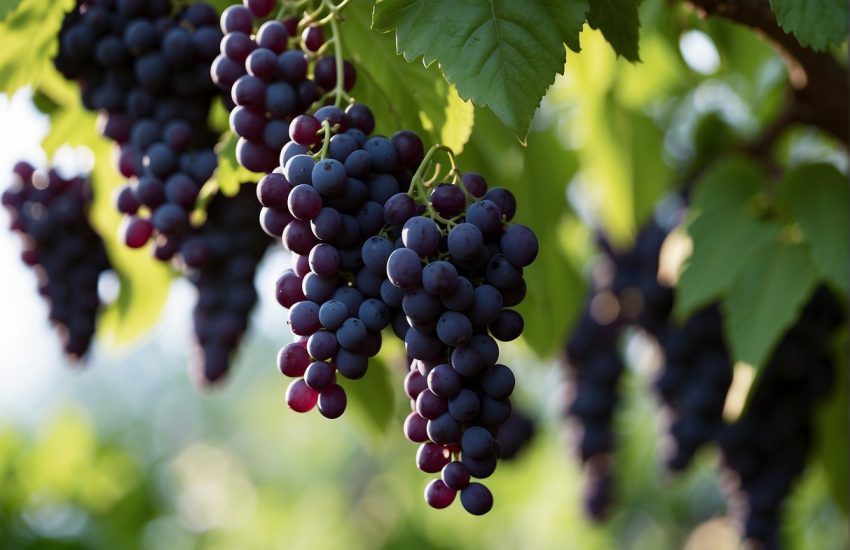Can Mangoes Grow in Texas? Exploring the Possibility of Mango Cultivation in the Lone Star State
Mangoes are a tropical fruit that are native to South Asia, but are now grown in many parts of the world. Texas, however, is not typically known for its tropical climate, leading many to wonder if mangoes can grow in the Lone Star State. The answer to this question is not a simple yes or no, as it depends on a variety of factors.

First and foremost, it is important to note that mangoes require a warm climate with plenty of sunshine and moderate humidity. While Texas may not be considered a tropical climate, there are parts of the state that experience these conditions, particularly in the southern regions along the Gulf Coast. Additionally, there are some varieties of mangoes that are more tolerant of cooler temperatures and can potentially grow in other parts of Texas as well.
Overall, while it may not be the most ideal location for mango cultivation, it is possible for mangoes to grow in Texas under the right conditions. As such, it is worth exploring the potential for mango farming in the state and considering the economic and agricultural benefits it could bring.
The Viability of Mango Cultivation in Texas
Mangoes are a tropical fruit that are widely grown in regions with warm and humid climates. Texas, on the other hand, is known for its hot and dry climate, which raises the question of whether mangoes can grow in this region. In this section, we will explore the viability of mango cultivation in Texas and provide insights into the factors that affect the growth and development of mango trees in this region.
Understanding Texas Climate and Soil Conditions
The climate and soil conditions in Texas vary depending on the region. However, the state is generally characterized by hot summers, mild winters, and low humidity levels. Mangoes thrive in warm and humid climates, and the lack of humidity in Texas can pose a challenge for mango cultivation.
Moreover, the soil in Texas is also a concern for mango growers. The state is known for its clay soils, which are heavy and poorly drained. Mango trees require well-draining soil that is rich in organic matter. Therefore, it is essential to prepare the soil adequately before planting mango trees.
Selecting the Right Mango Varieties for Texas
Mangoes come in different varieties, each with unique characteristics that make them suitable for specific growing conditions. When selecting mango varieties for Texas, it is crucial to consider the hardiness zone(s), sun exposure, and temperature requirements.
Mango trees thrive in full sun and require a minimum of six hours of direct sunlight each day. In Texas, it is advisable to plant mango trees in areas with partial sun exposure to protect them from the scorching heat.
Furthermore, mango varieties that are suitable for Texas should be able to tolerate the heat and cold temperatures in the region. Some of the hardy mango varieties that can grow in Texas include the Haden, Keitt, and Kent.
In conclusion, mango cultivation in Texas is possible, but it requires careful consideration of the climate and soil conditions. By selecting the right mango varieties and providing the necessary care, Texas growers can successfully cultivate this tropical fruit in their backyard.
Planting and Caring for Mango Trees in Texas
Mangoes are tropical fruits that are not native to Texas, but they can still be grown successfully in the state. Planting and caring for mango trees in Texas require some specific considerations to ensure healthy growth and fruit production. Here are some best practices for planting and caring for mango trees in Texas:
Best Practices for Planting Mango Trees
When choosing a location to plant a mango tree, it is important to consider factors such as sunlight, soil quality, and drainage. Mango trees require full sun exposure for optimal growth and fruit production. The soil should be well-draining and rich in organic matter to provide the necessary nutrients for the tree.
To plant a mango tree, dig a hole that is twice the size of the root ball and deep enough to accommodate the entire root system. Place the tree in the hole and backfill with soil, making sure to tamp the soil down firmly around the roots. Water the tree thoroughly to settle the soil and provide moisture for the roots.
Maintaining Healthy Growth with Proper Watering and Fertilization
Mango trees require regular watering to maintain healthy growth and fruit production. The soil should be kept moist but not waterlogged, as overwatering can lead to root rot and other issues. Regular fertilization is also important to provide the necessary nutrients for the tree. A balanced fertilizer with equal parts nitrogen, phosphorus, and potassium can be applied every three months during the growing season.
Protecting Mangoes from Pests and Diseases
Mango trees are susceptible to a variety of pests and diseases, including anthracnose and mites. To prevent these issues, it is important to maintain proper hygiene in the garden and regularly inspect the tree for signs of pest and disease. Pruning the tree can also help to promote healthy growth and fruit production.
In conclusion, planting and caring for mango trees in Texas requires some specific considerations to ensure healthy growth and fruit production. By following these best practices for planting, watering, fertilization, and pest and disease control, gardeners can successfully grow mango trees and enjoy the delicious fruits they produce.
Harvesting and Utilizing Texas Mangoes

Mangoes can be grown in Texas, but their cultivation requires careful attention to soil and climate conditions. Once the trees have been established, they can produce an abundance of fruit that is both delicious and versatile. This section will explore the best practices for harvesting and utilizing mangoes grown in Texas.
When and How to Harvest Mangoes
Mangoes should be harvested when they are fully ripe, which can be determined by their color and texture. Ripe mangoes are typically yellow or orange in color and have a soft, yielding texture. They should be picked from the tree by hand, taking care not to damage the fruit or the tree itself.
Once harvested, mangoes can be stored at room temperature for a few days to allow them to fully ripen. Alternatively, they can be stored in the refrigerator to slow down the ripening process. It is important to note that mangoes have a relatively short shelf life and should be consumed or processed within a few days of harvesting.
Uses of Mangoes Beyond Fresh Consumption
Mangoes are a delicious and nutritious fruit that can be enjoyed in a variety of ways beyond fresh consumption. One popular use for mangoes is in chutney, a sweet and savory condiment that pairs well with grilled meats and vegetables. Mangoes can also be used to make ice cream, smoothies, and other desserts.
In addition to their culinary uses, mangoes also have a number of health benefits. They are high in vitamins A and C, as well as fiber and antioxidants. Eating mangoes may also help to improve digestion and boost the immune system.
Overall, mangoes grown in Texas can be a tasty and healthy addition to any diet. With proper harvesting and utilization techniques, these fruits can be enjoyed in a variety of ways that will tantalize the taste buds and nourish the body.


